High-fiber foods
Fiber can lower blood sugar, cut cholesterol, and may even prevent colon cancer and help you avoid hemorrhoids. If it were a drug, the world would be clamoring for it.
But few people are getting enough.
Women should get about 25 grams a day and men at least 35 to 40, but the average person gets just 15 grams a day. Eating fiber-rich whole foods—not foods that tout “added fiber”—is the best way to increase your fiber intake, says Carolyn Brown, RD, a nutritionist at Foodtrainers, in New York City.
Here is a list of high-fiber foods—and tasty recipes that contain them.
1. Corn

We’re most familiar with the sunny, yellow version, but corn comes in a rainbow of colors—from pink to blue to black—each with its own special combination of antioxidant nutrients.
A single ear of corn, which is about a half cup of corn kernels, contains 2 grams of fiber. Popcorn is also a terrific—and low-calorie—fiber source, with about 3.5 grams of fiber per three-cup serving.
2. White beans

In addition to being rich in fiber, protein, and iron, white beans are one of the best nutritional sources of potassium—1 cup will cover 25% of your daily requirement for this hypertension-fighting nutrient.
Beans get a bad rap when it comes to gas, but the key is to amp up your fiber intake gradually, Brown says. “If you only eat (low-fiber) foods right now, don’t suddenly switch to eating 40 grams of fiber a day, because that will cause a lot of stress to the digestive system.”
3. Black beans

Black beans contain 15 grams of fiber per cup, and about 15 grams of protein. Their dark, rich color signals a high content of flavonoids, plant pigments that are powerful antioxidants. As you add beans and other high-fiber foods to your diet, be sure to drink more water, too, Brown says.
4. Kidney beans
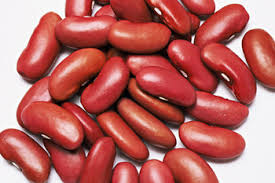
The key ingredient in red beans and rice, kidney beans are popular in northern India as well as New Orleans. Like their cousins—pretty much all of the beans we eat share the Latin name Phaseolus vulgaris, or “common bean”—they’re rich in fiber, protein, and iron.
5. Garbanzo beans

Also known as chickpeas, these versatile legumes come in two varieties: the light-colored “Kabuli” type, most common in the United States, and the darker “Desi” variety, which is richer in fiber and antioxidants. Garbanzos were first domesticated in the Middle East, where they remain an important staple ingredient in dishes such as hummus and falafel. They’re also widely used in India, the world’s biggest producer of chickpeas.
6. Avocado
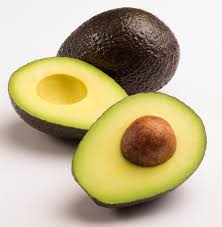
The creamy flesh of the avocado is a great fiber source; a two-tablespoon serving of avocado has about 2 grams of fiber and an entire fruit contains around 10 grams. Avocados are also an excellent source of mono- and polyunsaturated fats—the “good” kind that can help lower cholesterol and reduce heart-disease risk.
7. Whole-wheat pasta

Swapping out traditional pasta for the whole-wheat kind is a great way to introduce more fiber to your diet. “Really small changes will make a difference,” Brown says.
But whole-wheat pasta can be an acquired taste for those who are used to the white version. Grocery stores are likely to have whole-wheat pasta in several brands and shapes; you may want to try a few types to find the one with the taste and texture combination you like best.
8. Brown rice
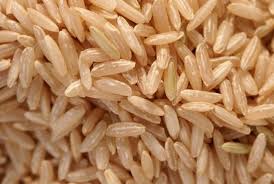
If you’ve been strictly a white-rice eater, the chewier texture and nuttier taste of brown rice can take some getting used to—but it’s worth the effort. Every cup contains 3.5 grams of fiber.
Harvard researchers recently found that although eating five or more servings of white rice a week increased type 2 diabetes risk by 17%, adding a couple servings of brown rice per week decreased risk by 11%.
9. Edamame
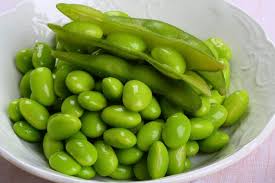
Long popular in East Asian cuisine, edamame are immature soybeans boiled in the pod. You can pop them out of the pod into your mouth, or mix them into a tasty dip. A half-cup serving of edamame can contain up to 11 grams of protein and 9 grams of fiber, depending on the brand.
10. Whole-wheat bread

White bread and other refined grains are milled, meaning the outer coating of the grain (bran) has been removed, along with the germ, a tiny part of the kernel that serves as the seed’s ’embryo.’ Whole wheat retains these nutrients- and fiber-rich elements, so switching from white to whole wheat is a smart nutritional move.
“Making it your go-to will make a big difference in terms of the number of grams of fiber you’re getting,” says Brown.
11. Lentils

This tiny member of the legume family is super-rich in fiber, with 15.6 grams per cup. Cultivated since Neolithic times, lentils are also a great source of protein, B vitamins, iron, and other minerals.
12. Pear

As with most fruits with edible skins, pears are most nutritious and fiber-rich when their skins are left intact. “Keeping the skin on is really important for fiber,” Brown says. A medium-size unpeeled pear contains about 5.5 grams of fiber.
13. Artichoke

A single boiled artichoke contains a whopping 10.3 grams of fiber, and you’ll get 7.2 grams of fiber from a half cup of artichoke hearts. Artichokes also are rich in silymarin, an antioxidant that may improve liver health.
14. Oatmeal

Oats contain beta-glucan, a special type of fiber that has particularly powerful cholesterol-lowering effects and may also boost immune-system function.
Oats also features a good mix of soluble fiber (the type that lowers blood cholesterol) and insoluble fiber (which helps keep your digestion running smoothly).
15. Raspberries

Whether they’re ruby-red or blue-black, raspberries are nutrition superstars. In addition to being extra-rich in fiber, one cup will give you about a third of your daily fiber needs—they’re also chock-full of powerful antioxidants.
When raspberries aren’t in season, buying them frozen is easier on your wallet.
16. Peas

The humble pea, eaten straight out of the pod, bought frozen or cooked, or dried and made into split-pea soup, is a tasty, versatile, and inexpensive fiber source. One cup of split peas boasts 16.3 grams of fiber, and a cup of frozen peas contains a not-too-shabby 8.8 grams after cooking.
17. Broccoli
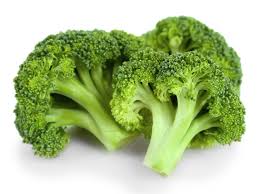
By now we all know that broccoli is very good for you. A member of the cruciferous vegetable family, known for its cancer-preventing properties, this veggie also contains a respectable amount of fiber: You’ll get about 5.1 grams in a cup of boiled broccoli.
18. Apples

When you’re talking about apples, the skin’s the thing—you’ve got to leave it on or you’ll be missing out on fiber and a host of beneficial phytochemicals.
“Once you take the skin off, you take off a lot of the good stuff that’s in there,” Brown says. A single regular-size apple contains about 4.4 grams of fiber.
19. Almonds

Almonds—and pretty much every other edible nut and seed you can think of—are good sources of fiber, packed with healthy fats and protein.
But all that goodness comes with a high-calorie count, so keep your eye on serving size. A quarter-cup handful makes a good balance, with about 3 grams of fiber and around 170 calories.
20. Barley

It may be best known as a raw ingredient in beer and whiskey, but barley is a whole grain, too, and a good source of heart-healthy beta-glucan.
A recent study found that healthy people who ate barley with their breakfast felt less hungry before lunch than study participants who ate wheat or refined rice.
Hope you like my post. Please feel free to share…
Courtesy:
http://www.health.com/health/gallery/0,,20553010,00.html

Hey, thanks for a great post, it seems everyone these days is trying to make a little extra on the side but it is so hard to find really good blogs like yours. I’ve also been following this guy for a while and have had some success as a begginer using some of his methods. Maybe some of your readers might find it usefull too. https://www.affiliatemarketing101.com.au
It’s hard to come by well-informed people for this subject, however, you seem like you know what you’re talking about!
Thanks
Best view i have ever seen !
I love it when folks come together and share ideas. Great website, stick with it!
Good day! Do you know if they make any plugins to help with Search Engine Optimization? I’m trying to get my blog to rank for some targeted keywords but I’m not seeing very good results. If you know of any please share. Many thanks!
Yes, you may try Toast plugin. Good luck!
A lot of whatever you state is astonishingly accurate and that makes me ponder why I had not looked at this with this light before. This article really did switch the light on for me as far as this issue goes. However there is actually one issue I am not necessarily too comfy with so while I make an effort to reconcile that with the actual core theme of your position, permit me observe just what all the rest of the visitors have to say.Well done.
Woah! I’m really digging the template/theme of this blog. It’s simple, yet effective. A lot of times it’s hard to get that “perfect balance” between superb usability and visual appeal. I must say that you’ve done a superb job with this. Also, the blog loads super quick for me on Chrome. Superb Blog!
Best you can see in the morning !
Great to read
Great to read